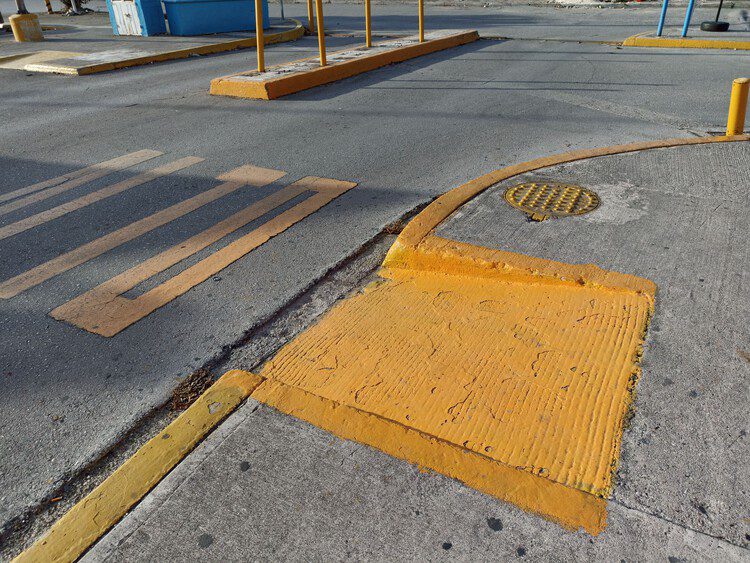Introduction:
Welcome to our latest post, where we explore the crucial role of curb ramps in creating accessible urban environments. Cities aiming for greater inclusivity recognize the crucial role of thoughtfully designed curb ramps. Explore with us as we examine the importance of these ramps, their influence on mobility, and their contribution to building a fair and accommodating society. Whether you’re an urban planner, accessibility advocate, or just curious about the factors that create truly inclusive urban spaces, this blog provides insights into the essential realm of curb ramps.
Unveiling the Basics: What Are Curb Ramps?
Before we dive deep, let’s understand the fundamentals. Curb ramps, or curb cuts, are inclined planes designed to connect sidewalks to streets, enabling smooth transitions for individuals with mobility challenges, parents with strollers, and anyone else who may benefit from an obstacle-free path.
“The Accessibility Imperative: Why Curb Ramps Matter”
In our journey towards a more inclusive society, curb ramps emerge as a beacon of progress. Addressing the diverse requirements of individuals with disabilities, they empower everyone to navigate public spaces independently. This section explores the compelling reasons why curb ramps matter in the grand tapestry of urban planning.
“Designing for Diversity: Types of Curb Ramps”
Curb ramps come in various designs to cater to different environments and needs. This section breaks down the types of curb ramps and their strategic placement in urban landscapes, from perpendicular ramps to diagonal ones.
“The Legal Landscape: Curb Ramps and Accessibility Laws”
Governments worldwide have recognized the importance of accessibility, leading to the implementation of stringent regulations. Explore the legal framework surrounding curbramps, highlighting how they contribute to compliance with accessibility laws.
“Universal Design: Beyond Compliance”
While compliance with accessibility laws is crucial, true inclusivity goes beyond mere adherence. Discover how the principles of universal design influence the evolution of curb ramps, ensuring that public spaces are welcoming to everyone, regardless of their abilities.
“Challenges and Solutions: Navigating the Curb Ramp Dilemma”
Even with the best intentions, challenges arise in implementing and maintaining curb ramps. This section identifies common issues and presents innovative solutions to ensure that these accessibility features serve their purpose effectively.
“Community Voices: The Impact of Curb Ramps on Everyday Lives”
To truly understand the impact of curb ramps, let’s hear from the community. Personal stories and experiences shed light on how these unassuming ramps make a significant difference in the daily lives of individuals with diverse needs.
“Innovation Spotlight: Advancements in Curb Ramp Technology”
The world of accessibility is ever-evolving, and curb ramps are no exception. Explore the latest technological advancements that enhance these essential urban features’ functionality and user experience.
“Curb Ramps around the World: Global Perspectives on Accessibility”
Curb ramps have become a global phenomenon, from bustling metropolises to quaint towns. Take a virtual journey worldwide, exploring how different cultures and cities prioritize accessibility by installing curb ramps.
“Sustainability Matters: Curb Ramps in Green Urban Planning”
As we strive for a sustainable future, it’s crucial to integrate accessibility into eco-friendly urban planning. Uncover how curb ramps play a role in creating environmentally conscious and inclusive urban environments.
“Educating the Masses: Raising Awareness about Curb Ramp Etiquette”
Creating a culture of respect and understanding around curb ramps is essential. Learn about the significance of public awareness campaigns in fostering proper etiquette and ensuring these pathways remain accessible.
“Looking Ahead: The Future of Curb Ramps in Urban Evolution”
In this final section, we gaze into the crystal ball of urban development. What does the future hold for curb ramps, and how will they continue to shape the landscape of accessible and inclusive cities?
Conclusion:
As we wrap up our exploration of curb ramps, it’s evident that these unassuming features are the unsung heroes of urban inclusivity. From legal compliance to personal anecdotes, curb ramps weave a narrative of progress, reminding us that true innovation lies in designing spaces that welcome everyone, regardless of their physical abilities.





























